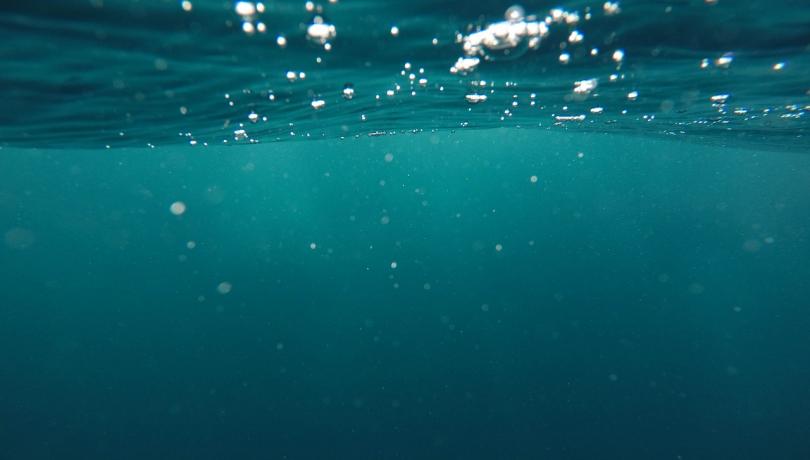In the "In Depth" section of this February's Newsletter, we talk about tiny particles of biological origin that play a key role in determining the climate.

"L'essentiel est invisible pour les yeux" (the essential is invisible to the eye), said The Little Prince. And he was not wrong. It happens on land and also in the sea, where marine microorganisms, although we do not see them, play a key role in the proper functioning of marine ecosystems. There are those that capture carbon dioxide (CO2) and transport it to the seafloor, bacteria capable of degrading mercury and even species belonging to the plankton that act as condensation nuclei and literally behave like cloud seeds.
These are known as marine aerosols, tiny particles between one thousandth and one millionth of a millimeter in size that rise into the atmosphere due to the water turbulence resulting from the wind or the waves breaking, among other processes. They can also reach the atmosphere due to melting ice, which frees the organisms trapped in the ice and allows them to enter the atmosphere.
Once there, due to humidity, these particles are transformed into water droplets that will contribute to the clouds formation. Scientists’ favourite place to study them are pristine areas far from civilization. This is the case of the Arctic and Antarctica, remote enclaves where particles of biological origin do not mix with those of anthropogenic origin and the role of marine microorganisms in cloud formation can be studied without interferences.
Another reason why it is important to travel to the polar areas to study marine aerosols is because these areas are experiencing the effects of the climate crisis much more intensely than others. For example, it is known that the Arctic is warming almost four times faster than the rest of the planet, causing the ice melting and driving the emission of more aerosols into the atmosphere.
Until now, clouds have been little taken into account in polar climate studies, but they are now essential for adjusting climate predictions, so there is no choice but to deepen the study of their formation. On the one hand, the cloud layer determines the amount of radiation that reaches us from the sun by partially reflecting its rays, as if it were a protective layer on the Earth’s surface, while on the other it retains heat, thus contributing to the planet's temperature regulation.
The study of aerosols
To study these aerosols, the Institut de Ciències del Mar (ICM-CSIC) has created a series of experimental pans that simulate the production of these particles. They are equipped with a sophisticated sensor system capable of analyzing the quantity, size and chemical composition of the aerosols coming from the planktonic community.
The group studying marine aerosols is currently on the Antarctic Peninsula aboard the oceanographic research vessel (BIO) Hespérides as part of the international POLAR CHANGE campaign. Almost thirty researchers of 14 different nationalities are participating in the expedition, aimed precisely at delving deeper into the study of marine aerosols.
To this end, during the expedition, seawater and air samples will be continuously collected and later analysed under the microscope to decipher the species that form marine aerosols and to try to find out if there is a direct relationship between the type of communities and the amount of aerosols produced.